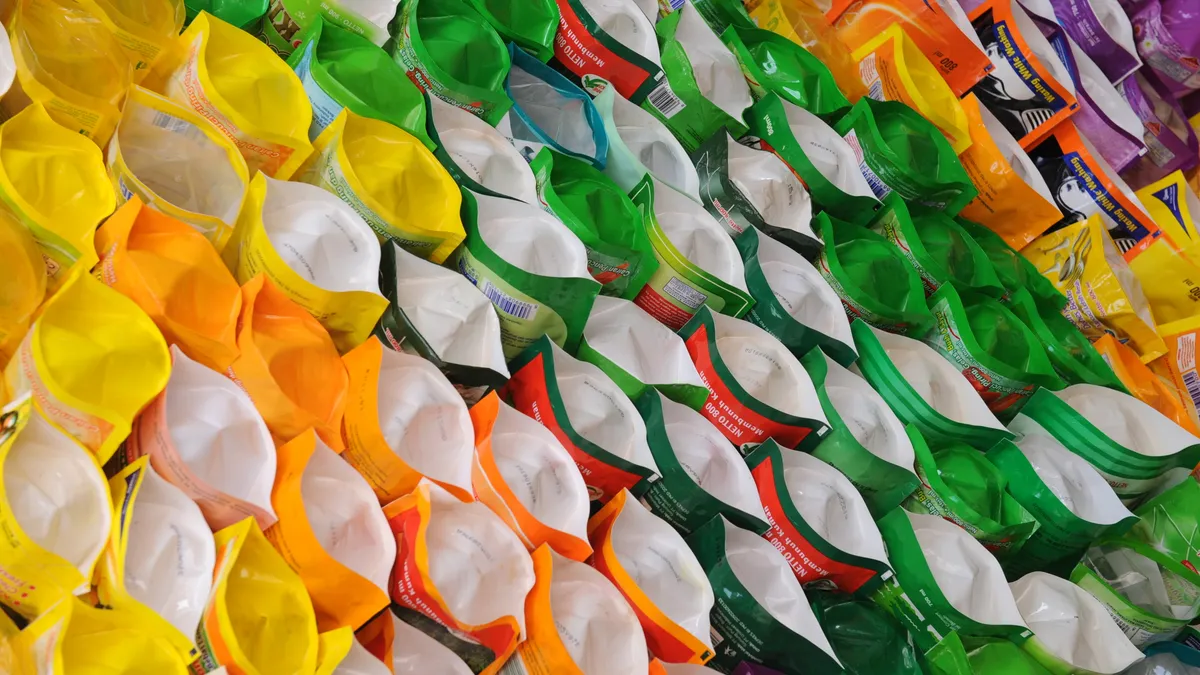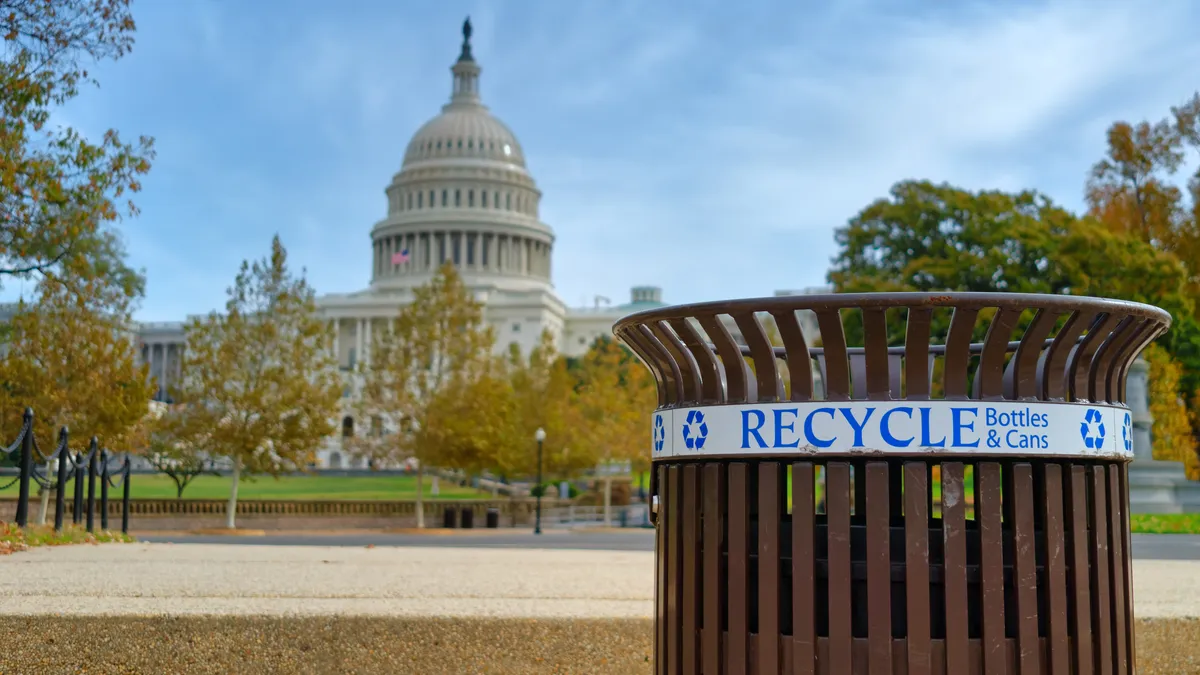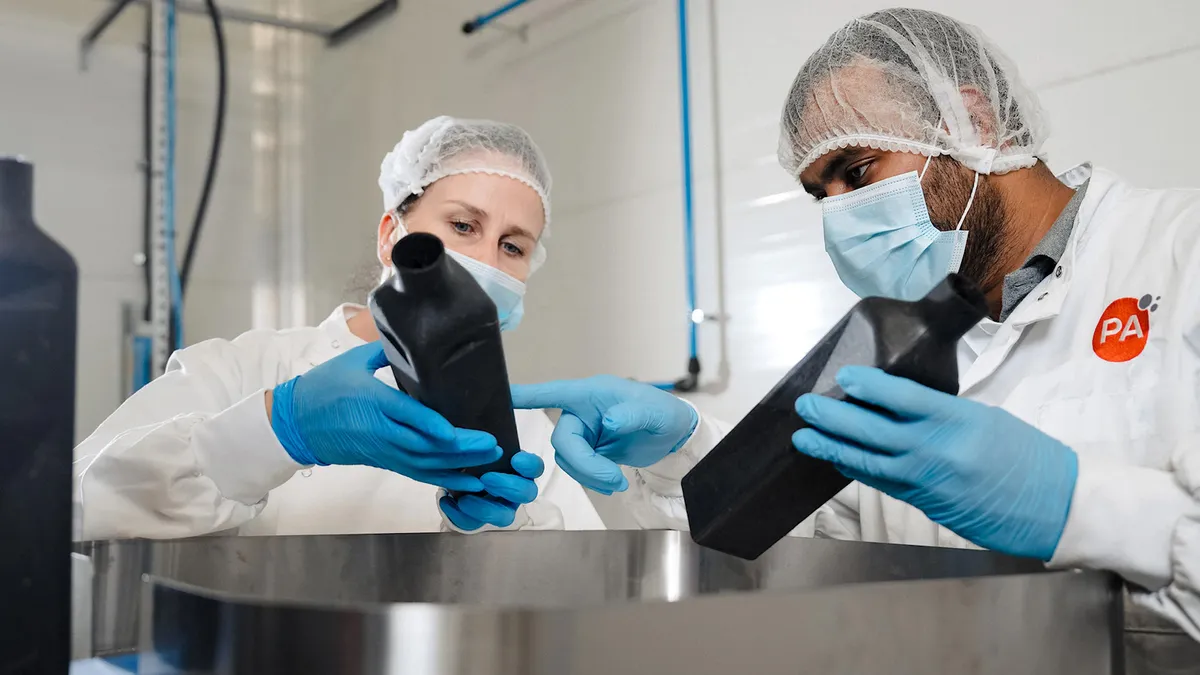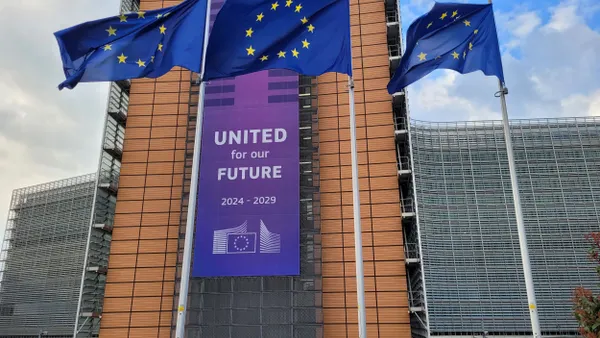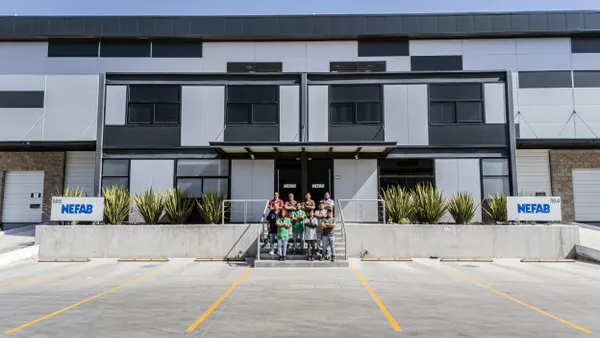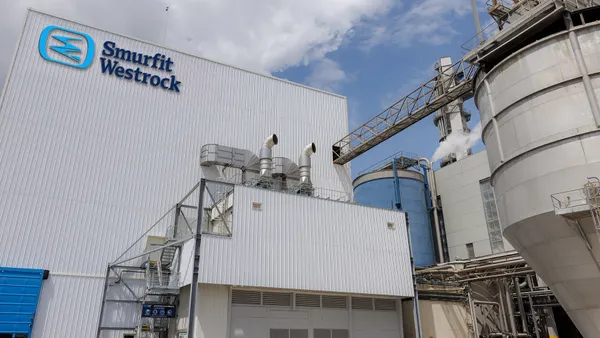Dive Brief:
- The packaging industry will continue to grow through 2025, but the pace of growth is expected to slow to a 1.5% compound annual growth rate compared to 1.7% in 2022, according to a report released Thursday by the Association for Packaging and Processing Technologies (PMMI) and AMERIPEN that examines 10-year trends in packaging design, materials, recovery systems and legislation.
- The report predicts shifts in the types of packaging used, including toward flexible plastic and compostable paper or plastic, but it cautions that current recovery systems are not adequate to handle the emerging and future materials.
- The CPG and retail survey respondents also expect to significantly increase the amount of postconsumer recycled content in their products over the next decade. However, demand for PCR currently far exceeds supply, the report says.
Dive Insight:
Insights from the 394 CPG brands and retailer respondents indicate notable shifts in the type of packaging they’ll use over the next decade. Still, the groups don’t forecast an overall contraction in the packaging industry. Even though plastic reduction movements and bans are gaining popularity, that substrate is “not something that’s going to go away,” said Rebecca Marquez, director of custom research at PMMI, during a webinar discussing the report’s findings.
In fact, plastic leads the respondents’ current substrate use: 75% use plastic materials, 61% use paper, 14% use glass and 13% use metal. Data suggests there will be explosive growth with flexible plastic packaging in the coming years despite the recycling challenges.
“Plastics are going to continue to grow regardless of the language that you’re seeing around plastics and efforts to minimize plastics use,” Marquez said. “We’re going to need to think of solutions for managing these materials ... It’s not that they’re not recyclable, it’s that we need to increase access for people to recycle these materials.” Currently, less than 2% of the U.S. population has access to curbside flexible plastic recycling, according to The Recycling Partnership data cited in the report.
Numerous respondents indicated plans to substitute flexible plastics for rigid plastics and metals. They also expressed interest in moving away from multi-material flex packaging and toward mono-material, which would improve recyclability.
In 2021, beverage packaging comprised 47.4% of respondents’ packaging volume and food comprised 44.9%; the “other” category, which includes includes personal care, household products and pet care, accounted for 7.7%. Based on the breakdown of key food categories, which is led by confectionary and savory snacks, “we really do need to anticipate more films in small format packaging,” Marquez said. Films could experience 4-6% CAGR from 2028-2030 according to Mordor Intelligence, and the Flexible Packaging Association predicts 3-4% CAGR for plastics as a whole.
Certified products, like corrugated fiberboard and recycled paperboard, also are expected to experience an uptick in use.
The groups said during the webinar that one of the most interesting findings is that CPGs and retailers anticipate greatly increasing their use of compostable paper and plastic materials, with a sharp upturn expected in 2027 and 15-16% CAGR by 2032. But because compostable packaging currently represents such a small market share, this increase won’t yet significantly influence overall packaging volumes.
The report cautions that the U.S. does not presently have the infrastructure to support composting at this scale. Currently, 27% of Americans have curbside composting access, and 11% of composting services accept packaging. Some composting programs also aren’t accepting compostable packaging because of contamination concerns, as is the case with A1 Organics in Colorado, which will eliminate the products from its accepted materials list beginning next month.
“Clearly we have an opportunity here to address an emerging and growing packaging component... and we need to start that dialogue now,” Dan Felton, executive director of AMERIPEN, said during the webinar.
Webinar speakers explained that no single solution exists for handling packaging at end of life, and building up a variety of methods will be key to achieve greater recyclability and sustainability.



